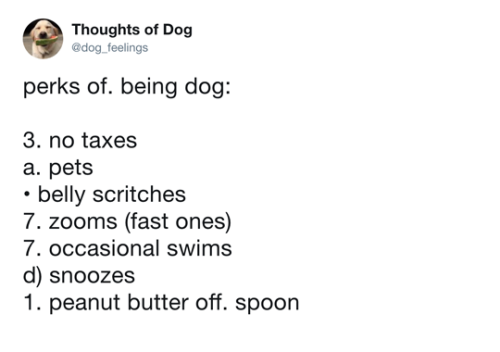#dog thoughts
So I’ve been thinking about Marcie’s behaviour patterns in regards to checking out. Last night training went for around 1 hour during which we did 4 runs. She was super switched on for the first two runs and then noticeably less engaged in the second two runs, butshe was still interested in the food rewards and not as sniffy as the week before. I also dropped the tug for the last run so that she didn’t feel any pressure and only asked for simple, known behaviours (nose to hand touch).
I think that what I’m dealing with here is just fatigue over long sessions (and I think this is the same at trials). I only train this long during club nights. In shorter sessions when she has checked out in the past I’m pretty sure it has been due to environmental distractions (I train in lots of random places) and low value rewards. I’ve substantially upped my reward value and I’m trying very hard with engagement games to gauge her attention before training.
I think I just need to take into account that the longer a training session goes on, the more tired and therefore disengaged she’ll get. At club I have to stay for the full training time and I think *not* training with her isn’t an option as then she will get bored, but perhaps I can just make it easier as the night progresses, focusing on known behaviours and a high rate of reinforcement.
I’ve seen improvement already by changing my training structure and improving my food rewards. Hopefully by adding some new reinforcement methods (lotus balls are coming!) and being conscious of fatigue at club I can get better results overall and ensure that the agility game stays fun and rewarding for us both.
I’ve been reflecting a lot since our lacklustre trial performance on Friday night and I found some really useful things that helped me sort through my thoughts.
The first was Megan Foster’s brand new podcast where she described her journey through agility training. She said that in 2015 she changed her entire training approach when she got a Parson Russell Terrier.
With all of my previous dogs I was basically training the way that everyone around me was training. It wasn’t force, we weren’t using prong collars or e-collars or anything like that, so it wasn’t want you might consider a traditional compulsion trainer. But it wasn’t the trainer I am today, it was something in between. It was positive reinforcement with a sprinkling of “or else” on top.
And that pretty much worked because the dogs that I had before getting Shrek were pretty cooperative; they enjoyed the work enough that my training didn’t have to be super precise, super clear. If my handling was pretty precise and pretty clear they were willing participants.
But when I got Shrek things changed. My situation was different. I was working a lot more than I was working when I had my other dogs before and he needed more precise training, more clear training. When I got him I made a huge shift in how I train and how I look at things.
—Megan Foster, Fostering Excellence in Agility
The second was an episode of Susan Garrett’s podcast Shaped by Dog where she talked about coming full circle in her training with her dog Feature.
So, when I sent her to a kennel, she jumped up and bit me in the face. And I immediately grabbed her collar and gave her a swift little clip under her chin with my hand. And then she went in her kennel, and I called her back out and I tried to love her up, she wasn’t the same dog… Now you could say, “Well Susan, she probably never bit you in the face again, did she?” She didn’t. But there were so many things wrong with that situation. I was in a hurry, I took that puppy over threshold. How do you expect an eight-week-old puppy not to make mistakes? And why should you have your face down there?
Now it took me a while to learn the lesson of don’t put your face down there because in 2015 when Feature had a litter of puppies and I was playing with one of them with my face down there, and that puppy jumped up and bit my face and drew blood my reaction was to laugh. And I knew I had come full circle as somebody who had made a conscious choice to leave the world that looks at dogs as needing to be punished behind. That I laughed and I have a picture holding the puppy because it was such a proud moment for me at the realisation is my innate response is no longer to say, “Why did you do that to me?!”
When you are under pressure, when you’re feeling frustrated, that’s what tells you what your real philosophy about dog training is.
—Susan Garrett, Shaped by Dog, Episode 146: Balanced Dog Training: Does It Really Exist?
And the third was re-reading the Motivation Special Issue of Clean Run I have (one of my best purchases), specifically articles around “need for speed” dogs, training games and demotivating behaviour during training.
All of these things have made me realise that I, too, need to change the way I train. I already make sure not to punish or disparage my dog during agility training, but I don’t always hide my frustration or go into it with a lighthearted mindset. I absolutely could be doing so much more to make agility training fun and light and silly. It’s not serious, it doesn’t have to be serious. And even if I’m not punishing, I’m still demotivating and I don’t have to be.
I’m going to make a conscious effort to change the structure of my training sessions to incorporate more games and reinforcement. I’m going to try really hard to change my mindset to find everything funny instead of frustrating. I’m going to focus more on relationship wellness outside of training and ensure I am giving Marceline more attention for things she wants to do and not just what suits me.
It’s been a difficult and self-absorbed few months for me, but I’m going to consciously try to get outside myself and get back to focusing on Marceline and what brings her joy in training.



